This article was co-authored by Erik Kramer, DO, MPH. Dr. Erik Kramer is a Board-Certified Primary Care Physician at the University of Colorado. With over 15 years of experience, his clinical interests include obesity and weight management, diabetes care, and preventive care, as well as embracing a holistic approach to primary care. He received his Doctorate in Osteopathic Medicine (D.O.) from the Touro University Nevada College of Osteopathic Medicine and completed his residency at Central Maine Medical Center. Dr. Kramer is a Diplomate of the American Board of Obesity Medicine.
There are 32 references cited in this article, which can be found at the bottom of the page.
This article has been viewed 170,006 times.
Cholesterol is a natural, waxy substance created by the liver that circulates through the blood to maintain healthy cell membranes. It also helps build hormones and vitamins in the body. Cholesterol also comes from animals that we eat. A diet high in saturated and trans fats will stimulate the liver to produce excess cholesterol and put you at risk for a heart attack or stroke.[1] In order to determine your health risk, your doctor can perform a test to determine the ratio between good and bad cholesterol in your blood. A high cholesterol level usually reflects narrowed or blocked arteries due to the buildup of plaque created by cholesterol.[2]
Steps
Getting a Cholesterol Test
-
1Choose a location to get tested. It is recommended to get your cholesterol tested at your primary care doctor’s office because they will know your age, family history, and other health factors better than anybody. This is important information when the results are interpreted. Since your doctor knows you best, you will also be able to receive a more comprehensive plan for treating high cholesterol.[3]
- Many different types of home tests are available,[4] but have not been supported by most health organizations or associations. Make sure to read labels and directions carefully and use discretion when reading home tests. The results may not be accurate.[5]
- Some companies offer free or low-cost cholesterol screening services that don’t require you to go to your doctor’s office. However, before you use one of these services, research the organization and find out if they’re reputable. You may also wish to have your doctor review the results of the test.
- Some worksites also provide screenings for their employees.[6]
-
2Fast before the test if your doctor instructs you to. Make sure not to eat food or drink liquids for 9 to 12 hours prior to the test. Water is generally safe to consume before taking the test, but avoid coffee, tea, alcohol, and carbonated beverages.[7]
- Not all cholesterol tests require fasting, so ask your doctor whether it’s necessary to avoid eating beforehand.[8]
- Talk to your healthcare provider about your current medications. Certain meds, like birth control, can affect your cholesterol levels.[9] It may be recommended that you skip a dose before taking a cholesterol test.
Advertisement -
3Check your levels of good and bad cholesterol. A cholesterol test measures your HDL cholesterol, LDL cholesterol, and triglycerides. The test is conducted by taking a small blood sample from your arm, which is then analyzed in a laboratory. The result will show your cholesterol level in millimoles per liter of blood (or milligrams per deciliter of blood in the United States) and it will be interpreted by your physician based on your age, family history, and blood pressure.[10]
- You will get 3 numbers back from your cholesterol test: your total cholesterol, your total HDL (good cholesterol) and your total LDL (bad cholesterol). A high overall cholesterol score does not necessarily equal bad health, as it could be high due to high levels of HDL.[11]
-
4Calculate your cholesterol ratio. To find your cholesterol ratio, or the balance of good versus bad cholesterol, divide your total cholesterol by the HDL (good) cholesterol number. For example, say your total cholesterol level is 200. Your HDL level is 50. This would make your cholesterol ratio 4:1.[12] [13]
- A desirable total cholesterol number is below 5.2 mmol/L (below 200 mg/dL)
- A near optimal level for LDL is 2.6 – 3.3 mmol/L (100-129 mg/dL)
- The best HDL level is 1.6 mmol/L (60 mg/dL) and above. At minimum, men should have an HDL level of 1.0 mmol/L (40 mg/dL) or above, while women should have an HDL level of at least 1.3 mmol/L (50 mg/dL).
- The estrogen hormone in women might cause higher levels of HDL cholesterol.[14]
Managing High Cholesterol
-
1Manage your blood pressure. High blood pressure is one of the first major indicators of heart disease and stroke. If you have high blood pressure it is because the strain on your heart, arteries, and kidneys is unhealthy and likely caused by high cholesterol.[15]
- You can control your blood pressure by eating healthy, exercising regularly, reducing stress, staying fit, avoiding tobacco products, and limiting alcohol. It can be difficult to make lifestyle changes. Consider asking your regular physician for a referral to a therapist who can help you manage the transition.
- Most importantly, be aware that you have high blood pressure. There are few, if any, symptoms of high blood pressure, so it is your responsibility to get it checked. You get your blood pressure checked each time you visit the doctor's office, but if you have issues with high blood pressure your doctor may recommend an at-home testing kit.
-
2Reduce your blood sugar. High blood sugar could lead to complications related to diabetes.[16] Diabetes is known to lower HDL (good) cholesterol and raise LDL (bad) cholesterol, increasing the risk for heart disease and stroke.[17] It can also significantly raise your triglyceride levels. In fact, uncontrolled diabetes is a common cause of high triglycerides. [18] [19]
- This condition is called diabetic dyslipidemia. A side effect of this condition is atherosclerosis, in which the arteries become clogged with cholesterol.
- If you have a family history or are at risk for diabetes, reduce your weight, eat healthy, and increase your physical activity. These actions can greatly reduce the progression of diabetes.
- Medication is also available to help control high blood glucose levels and to prevent heart attacks and strokes.
-
3Get active. An active lifestyle is not only rewarding, but also helps to prevent many conditions associated with high cholesterol. Make an effort to participate in daily physical activity. It will maximize your health and increase the length and quality of your life.[20]
- Any exercise that makes your body warm enough to perspire and breathe heavily is healthy for your heart and helps reduce cholesterol. Some options include walking, swimming, cycling, jogging, skiing, or climbing.
- Pick something that is comfortable for you and that you enjoy. That may be a structured exercise program, an individual daily routine, or a routine you engage in with a workout buddy. Keep in mind that if you genuinely enjoy your exercise routine, you're more likely to stick to it.
-
4Eat healthier. Eating healthy is the most impactful action that you can take to better your health and lower your risk in numerous health categories, including high cholesterol. Make an effort to adopt a healthier overall diet.[21] Since cholesterol comes from meat and other animal sources, adopting a mostly plant-based diet[22] can make a big difference in your cholesterol levels.[23]
- Learn how calories work and how many you should consume daily. Consider that most food labels are based on a 2,000-calorie diet and that you will need to figure out if you need more or less than that depending upon your age, gender, and level of physical activity. Talk to your doctor or a certified dietitian about making a meal plan that's healthy for you.[24]
- Regular physical exercise is a good way to maintain your weight and lower your cholesterol.
- Variety and balance is the best strategy. Make sure to get enough nutrition from each of the recommended food groups. Foods that are rich in minerals, proteins, and whole grains and low in calories can help you control your weight.
- Limit saturated and trans fats, sodium, red meat, and sugary products, as all these can raise cholesterol levels.[25]
- Refrain from adding salt, sauces, or creams to your food.
- Drink fat-free (skim) and low-fat (1%) dairy products. Choose plenty of fiber-rich whole grains, and have 2 to 3 servings of fruits and vegetables daily.
- Eat fish containing omega-3 fatty acids twice a week, or consider other good sources of omega-3s, like avocado, olive oil, or nuts.
- Drink alcohol in moderation. This means 1 drink daily for women and 2 drinks daily for men.[26]
-
5Lose weight. Maintaining a healthy weight will reduce the burden you place on your internal organs, especially your heart. Living an active lifestyle that helps you reach and maintain a healthy weight will keep your blood pressure down and your high cholesterol at bay.[27]
- The simple equation is to reduce the amount of calories entering the body compared to the amount of calories burned by the body. By eating more calories than your body burns, your body will store the excess energy as fat and you will gain weight.
- 1 pound (0.45 kg) is equal to approximately 3,500 calories.[28] To lose 1 pound (0.45 kg) per week, you would need to reduce the intake of calories by about 500 per day through a combination of diet and exercise.[29] [30]
- Learn how many calories are in the foods you normally eat and take the appropriate measures to either cut unhealthy food out of your diet or reduce it to an acceptable level.
- It is hard to keep track of calories at the grocery store; therefore, make a quick list with the calories written down beside them in a typical meal. This way you can better gauge what you are buying and eating.
Understanding the Risks of Cholesterol
-
1Consider your risk factors. High cholesterol can be deadly because there are rarely any symptoms associated with it. Other factors—like risk for heart attack or stroke, which result from high cholesterol—should be taken into consideration when deciding whether to get tested or not.[31]
- Work with your doctor to develop and maintain a healthy lifestyle plan to lower your cholesterol levels and improve your overall health. Your doctor can give you the best advice as they are familiar with your specific medical history and risk factors.
- High cholesterol is usually the direct result of a poor diet, obesity, lack of exercise, and exposure to tobacco products. Strive to manage your diet to lower cholesterol. Aim to eat less meat and more fresh vegetables and fruits.
-
2Learn the recommended age for testing. Many health organizations recommend that all people between the ages of 20 and 79 get tested every 4 to 6 years. Other organizations recommend getting a cholesterol test based on age and risk factors for heart disease.[32]
- For men, testing is recommended if you are 35 or older. However, if you're between the ages of 20 and 35 and are at risk for heart disease, testing might be recommended sooner.[33]
- For women, testing usually starts when you are 20. It may start earlier if you have an increased risk of heart disease.[34]
- Children should only get tested if their family history indicates they are at risk.
- All adults who already have high cholesterol, coronary artery disease, or diabetes should get tested at least once a year.
-
3Be familiar with good and bad cholesterol. Cholesterol does not dissolve in the blood. Instead, it must be carried throughout your blood stream by lipoproteins (lipid proteins). There are 2 types of lipoprotein carriers: low-density lipoprotein (LDL) and high-density lipoprotein (HDL). Your total cholesterol count consists of both LDL and HDL, and one-fifth [35]
- LDL, the bad cholesterol, contributes to the thick, hard deposit of plaque that clogs arteries, leading to a condition known as atherosclerosis. If a clot forms and tries to pass through the blocked artery it will prevent blood from getting to your heart or brain, causing a heart attack or stroke.
- HDL, the good cholesterol, helps remove LDL cholesterol from the arteries by carrying it back to the liver to be broken down. Blood cholesterol consists of 25–35% HDL.
References
- ↑ https://www.hopkinsmedicine.org/health/conditions-and-diseases/high-cholesterol/cholesterol-in-the-blood
- ↑ https://www.keckmedicine.org/blog/what-is-the-difference-between-good-and-bad-cholesterol/
- ↑ https://www.heart.org/en/health-topics/cholesterol/how-to-get-your-cholesterol-tested
- ↑ https://medlineplus.gov/lab-tests/cholesterol-levels/
- ↑ https://my.clevelandclinic.org/health/articles/11920-cholesterol-numbers-what-do-they-mean
- ↑ https://www.cdc.gov/workplacehealthpromotion/health-strategies/cholesterol/interventions/programs.html
- ↑ https://medlineplus.gov/lab-tests/cholesterol-levels/
- ↑ https://www.health.harvard.edu/blog/farewell-fasting-cholesterol-test-201606169784
- ↑ https://medlineplus.gov/ldlthebadcholesterol.html
- ↑ https://www.heart.org/en/health-topics/cholesterol/how-to-get-your-cholesterol-tested
- ↑ https://my.clevelandclinic.org/health/articles/11920-cholesterol-numbers-what-do-they-mean
- ↑ https://www.urmc.rochester.edu/encyclopedia/content.aspx?ContentTypeID=167&ContentID=lipid_panel_hdl_ratio
- ↑ https://www.healthtab.com/en/public_site/reference_ranges
- ↑ https://www.hopkinsmedicine.org/health/wellness-and-prevention/why-cholesterol-matters-for-women
- ↑ https://www.cdc.gov/chronicdisease/resources/publications/factsheets/heart-disease-stroke.htm
- ↑ https://www.ncbi.nlm.nih.gov/books/NBK430900/
- ↑ https://www.cdc.gov/cholesterol/myths_facts.htm
- ↑ https://www.aafp.org/pubs/afp/issues/2007/0501/p1365.html
- ↑ https://pubmed.ncbi.nlm.nih.gov/25242435/
- ↑ https://www.heart.org/en/health-topics/cholesterol/prevention-and-treatment-of-high-cholesterol-hyperlipidemia
- ↑ https://www.betterhealth.vic.gov.au/health/conditionsandtreatments/cholesterol-healthy-eating-tips
- ↑ https://www.pcrm.org/good-nutrition/nutrition-information/lowering-cholesterol-with-a-plant-based-diet
- ↑ https://www.nhlbi.nih.gov/health/educational/lose_wt/eat/shop_lcal_fat.htm
- ↑ https://www.nhlbi.nih.gov/files/docs/public/heart/chol_tlc.pdf
- ↑ https://www.hsph.harvard.edu/nutritionsource/what-should-you-eat/fats-and-cholesterol/
- ↑ https://www.hsph.harvard.edu/nutritionsource/healthy-drinks/drinks-to-consume-in-moderation/alcohol-full-story/
- ↑ https://health.clevelandclinic.org/10-tips-for-lower-cholesterol/
- ↑ https://www.aicr.org/news/the-3500-calorie-weight-loss-myth/
- ↑ https://www.cdc.gov/healthyweight/physical_activity/index.html
- ↑ https://www.nhlbi.nih.gov/health/educational/lose_wt/eat/calories.htm
- ↑ https://www.heart.org/en/news/2018/08/20/bad-cholesterol-can-be-deadly-in-otherwise-healthy-people
- ↑ https://my.clevelandclinic.org/health/articles/16866-cholesterol-guidelines--heart-health
- ↑ https://medlineplus.gov/ency/article/007465.htm
- ↑ https://www.ncbi.nlm.nih.gov/pmc/articles/PMC4395876/
- ↑ https://www.hsph.harvard.edu/nutritionsource/what-should-you-eat/fats-and-cholesterol/cholesterol/

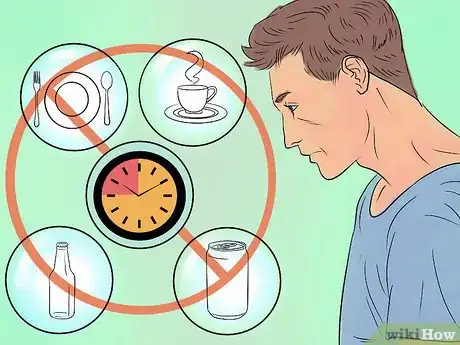





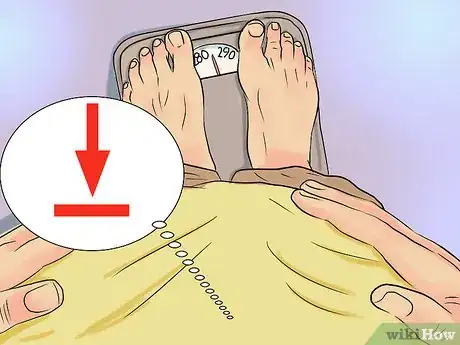
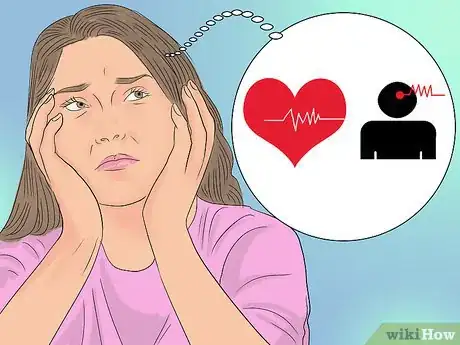

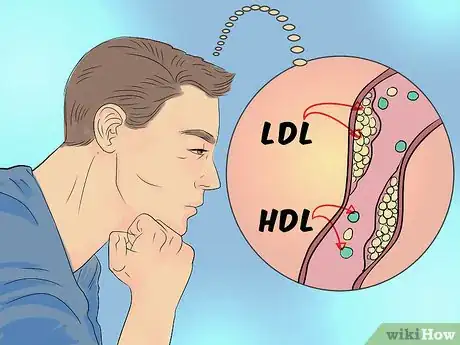
























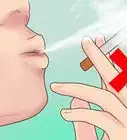
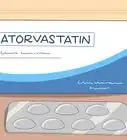



































Medical Disclaimer
The content of this article is not intended to be a substitute for professional medical advice, examination, diagnosis, or treatment. You should always contact your doctor or other qualified healthcare professional before starting, changing, or stopping any kind of health treatment.
Read More...